How to Use the APP
The organization-level APP is a core component for extending platform capabilities and integrating internal and external applications. Through the APP, you can seamlessly use various tools and services directly within the platform without switching between different systems, achieving workflow integration.
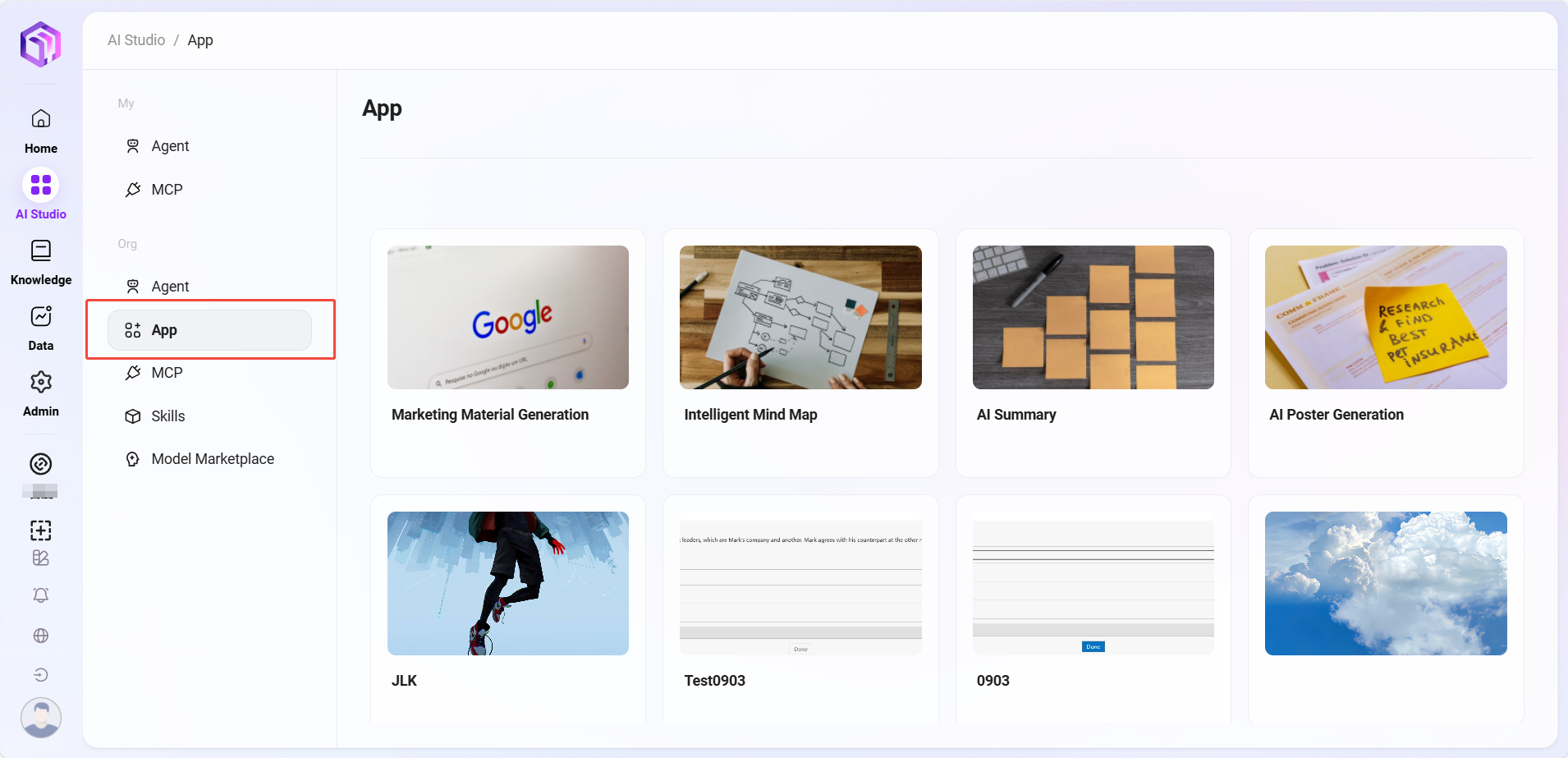
Intelligent Mind Map
The Intelligent Mind Map APP is a simple-to-use yet powerful tool that helps you quickly organize your thoughts and structure information.
-
Provides two convenient creation methods
- Directly input your requirement: Just describe the mind map content you want in one sentence, such as "Generate a mind map of the product launch process," and the system will automatically generate a clear map structure for you.
- Upload text or files: If you already have existing content (such as a document or a piece of text), you can upload it directly. The APP will automatically recognize the logical relationships in the content and generate the corresponding mind map.
-
The generated mind map is highly flexible and editable
- You can modify and edit the text content, add sub-levels, etc., fully meeting personalized needs.
- After editing, you can save the mind map to your personal space for easy viewing and further refinement anytime.
- You can also export it in XMind, PNG, or Markdown formats, convenient for use in different scenarios such as inserting into presentations, document writing, or sharing and communicating with others.
-
Applicable scenarios
- Students: Helps organize subject knowledge systems, assists in previewing and reviewing, improving learning efficiency and depth of understanding.
- Professionals: Can be used for planning project workflows, organizing meeting points, brainstorming, etc., making work ideas clearer and improving work efficiency.
- Creative workers: Can use it to inspire creativity, expand thinking boundaries, and systematize scattered ideas.

How to Use AI Document Summary?
AI Document Summary is an intelligent document understanding feature based on large language models, designed to help users efficiently grasp the core content of a single document. By automatically analyzing the uploaded document, the AI summary can generate the following types of information:
- Summary: Extracts key information and points from the document, quickly presenting core viewpoints.
- Outline: Structurally displays the document content hierarchy, facilitating an understanding of the overall framework.
- Mind Map: Graphically shows content relationships, helping clarify logical structures and thematic branches.
- Single Document Dialogue: Supports users to ask natural language questions about the document, and AI will provide intelligent answers based on the document content.
Document Selection
AI summary supports documents already uploaded to the knowledge base, documents not yet uploaded to the knowledge base, and text input.
Documents already uploaded to the knowledge base:
- Locate the document, click the file, and a preview page appears in the middle of the screen. On the right side of the preview page, you can select Summary, Outline, Mind Map, Dialogue.
- Enter the APP interface, find "AI Summary" in recommended apps, enter the AI summary interface, click "Knowledge Base," and select files from the knowledge base.


Documents not uploaded to the knowledge base: Enter the APP interface, find "AI Summary" in recommended apps, enter the AI summary interface, and upload files directly.
💡 Tip: Uploaded files can be viewed in "My Space -> Default Knowledge Base." After uploading, wait for indexing success to use.

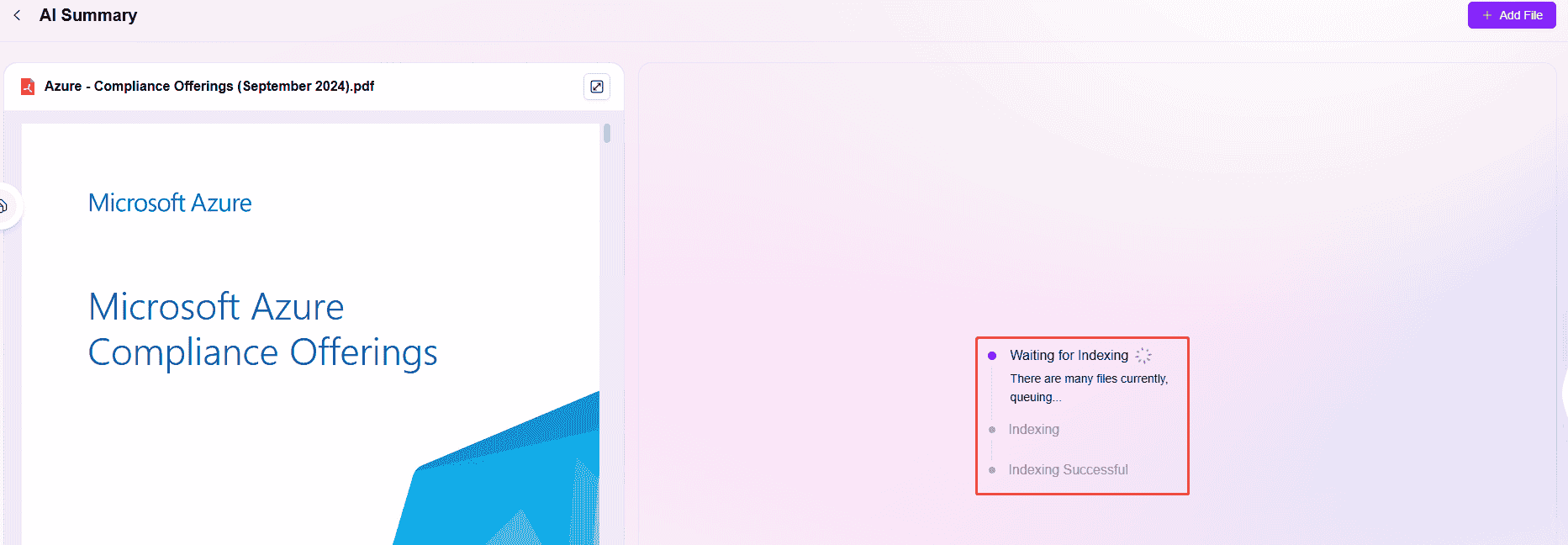
Text input: AI summary supports directly pasting or manually entering text content for quick generation.
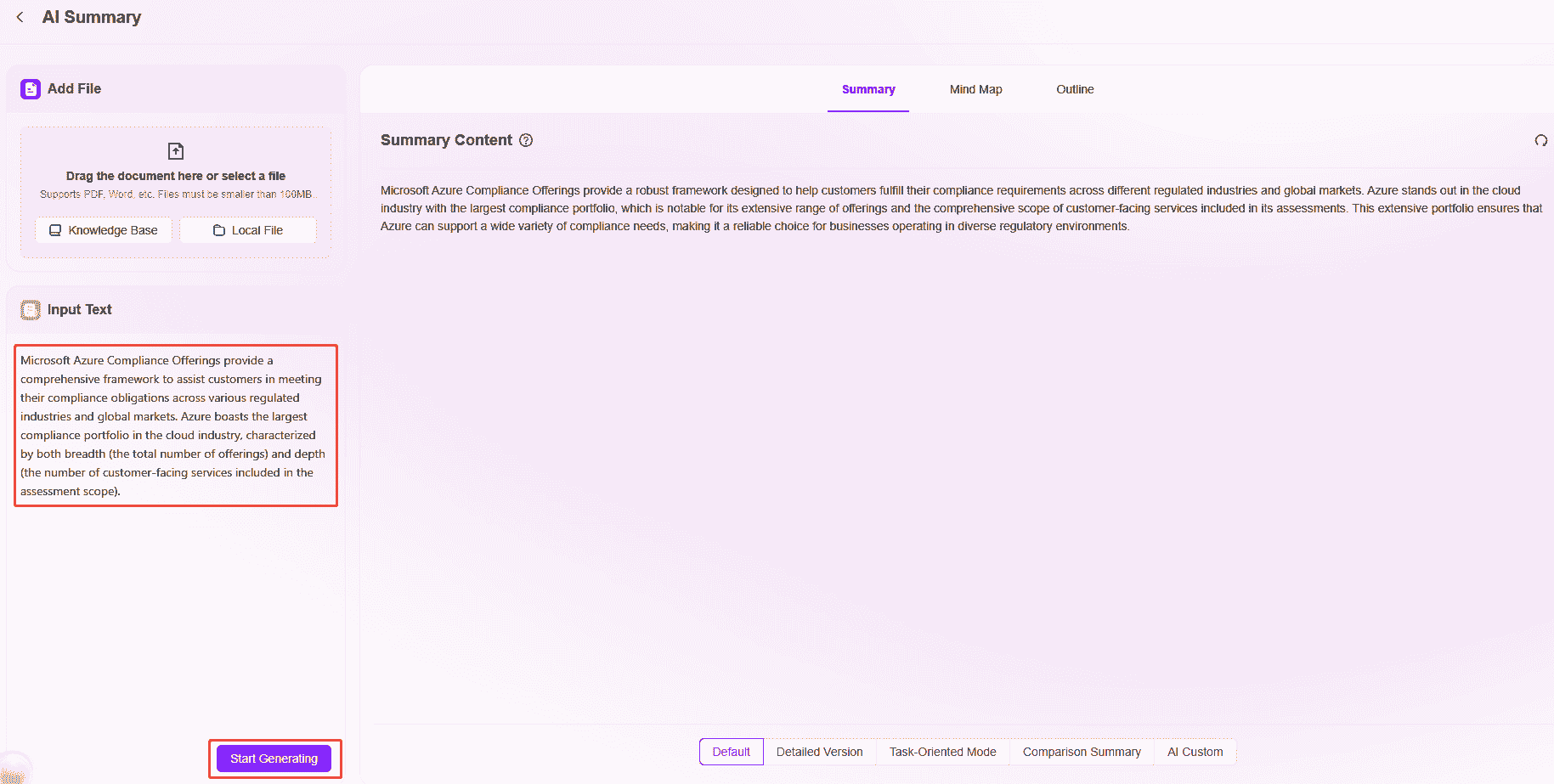
AI Document Content Summary
There are five types of AI document content summaries: Default, Detailed, Task-Oriented, Comparative Summary, Prompt Optimization
- Default: This mode generates summary content according to system preset rules, suitable for scenarios requiring concise and efficient output. It quickly produces conventional summary results without additional settings, meeting basic summary needs.

- Detailed: Compared to the default version, this mode deeply explores document content, covering more detailed information including event background, extended interpretation of key points, supplementary related content, etc. It generates more comprehensive and detailed content, suitable for scenarios requiring in-depth understanding of the document.

- Task-Oriented: Focuses on task breakdown and organization, concentrating on task goals, execution steps, responsible parties, time nodes, and other elements involved in the document. It summarizes content into a task list format, facilitating users to quickly capture action items and implement work arrangements.
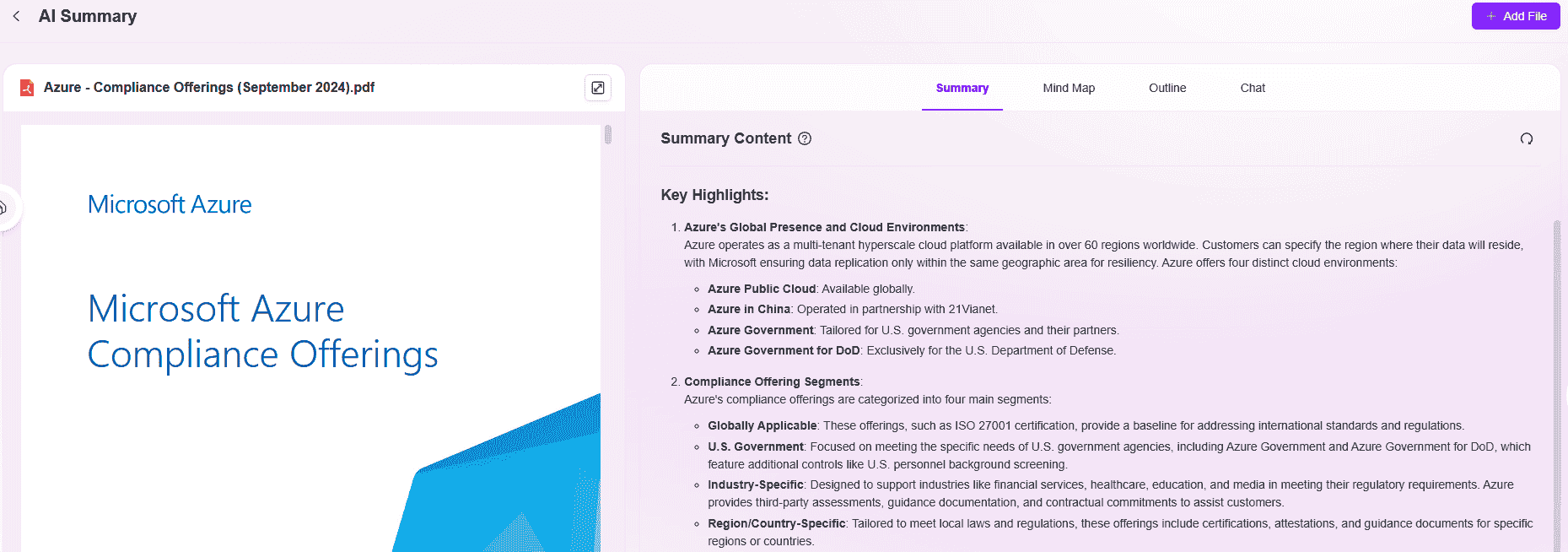
- Comparative Summary: Uses comparative analysis to outline the advantages and disadvantages of different objects, plans, or content. It analyzes pros and cons from multiple dimensions (such as effect, cost, applicability), helping users intuitively grasp differences and providing reference for decision-making.
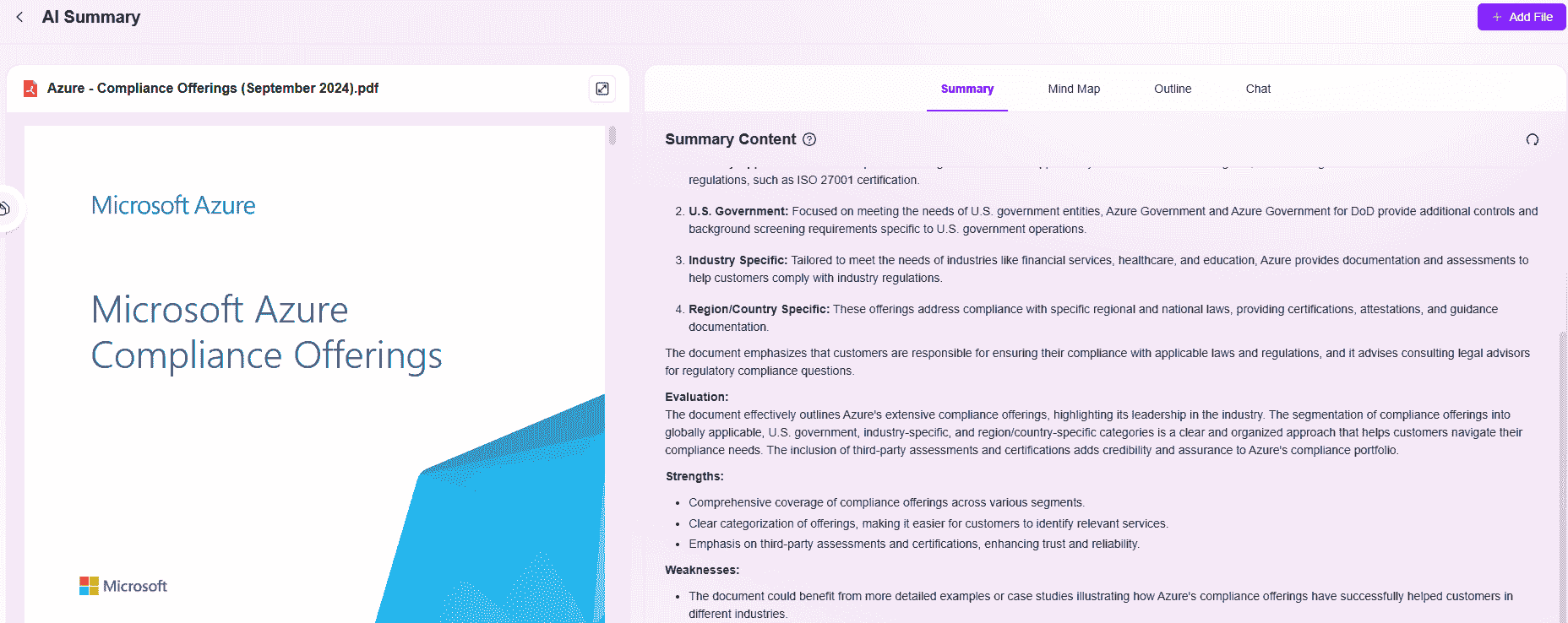
- AI Custom: Supports users to input personalized summary prompts, flexibly setting summary direction, key content, or format requirements. After clicking "Confirm," the system will generate a customized summary precisely based on user instructions, adapting to diverse and differentiated summary needs.

Mind Map
There are five types of mind maps: Default, Organizational, Timeline, Fishbone, Prompt Optimization
- Default Mind Map: The most basic mind map form, presenting content in a hierarchical and modular structure. Suitable for general scenarios such as daily knowledge sorting and idea organization. It shows information logic through keywords and branch associations, a classic mind map application mode.

- Organizational: Focuses on structure sorting and relationship presentation, commonly used to break down organizational structures, business processes, system modules, etc. Through clearly hierarchical branch design, it clearly shows the affiliation and collaboration relationships of each element, helping users quickly grasp the overall framework and detailed composition.

- Timeline: Uses the time dimension as the core logic, connecting content in chronological order. Suitable for sorting project phases, event development processes, historical progress, etc. Through time nodes and corresponding content associations, it intuitively presents the dynamic evolution process of things, facilitating tracking of temporal sequences.
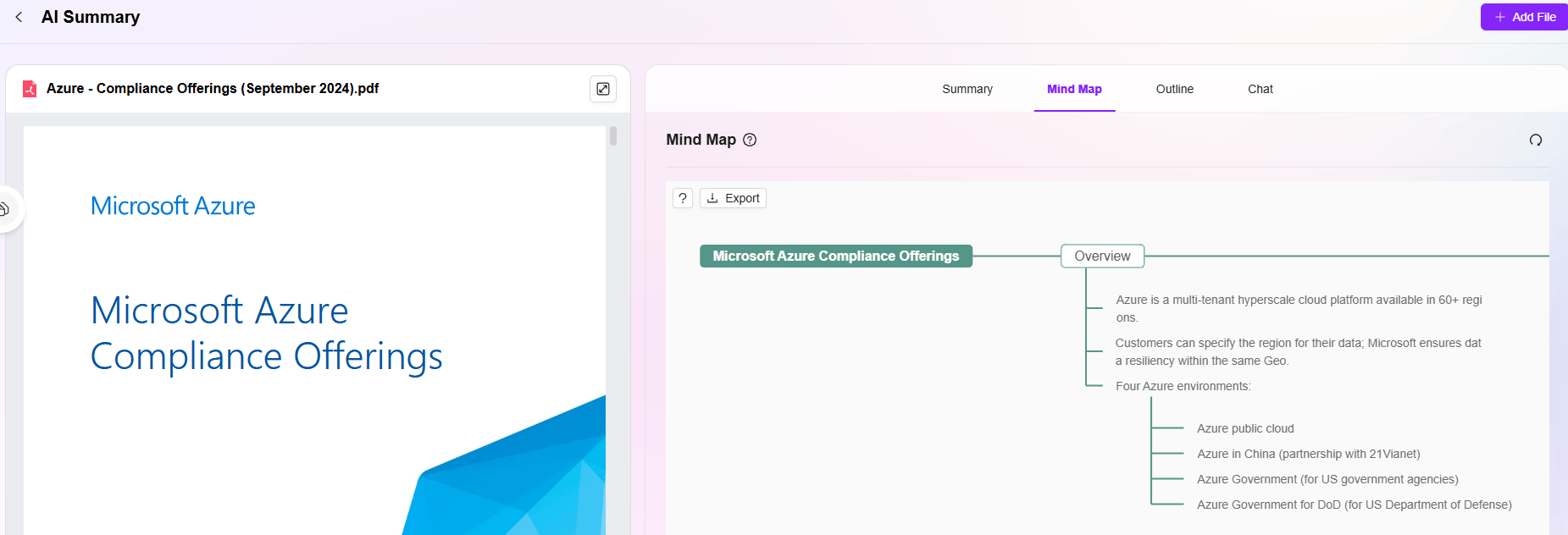
- Fishbone: Also known as cause-and-effect diagram, mainly used for problem analysis and cause breakdown. Using the "fish head" as the core problem, fishbone branches extend various influencing factors (such as personnel, equipment, methods, environment, etc.), helping users systematically sort out problem causes and explore potential correlations. It is a practical tool for logical analysis and decision-making deduction.
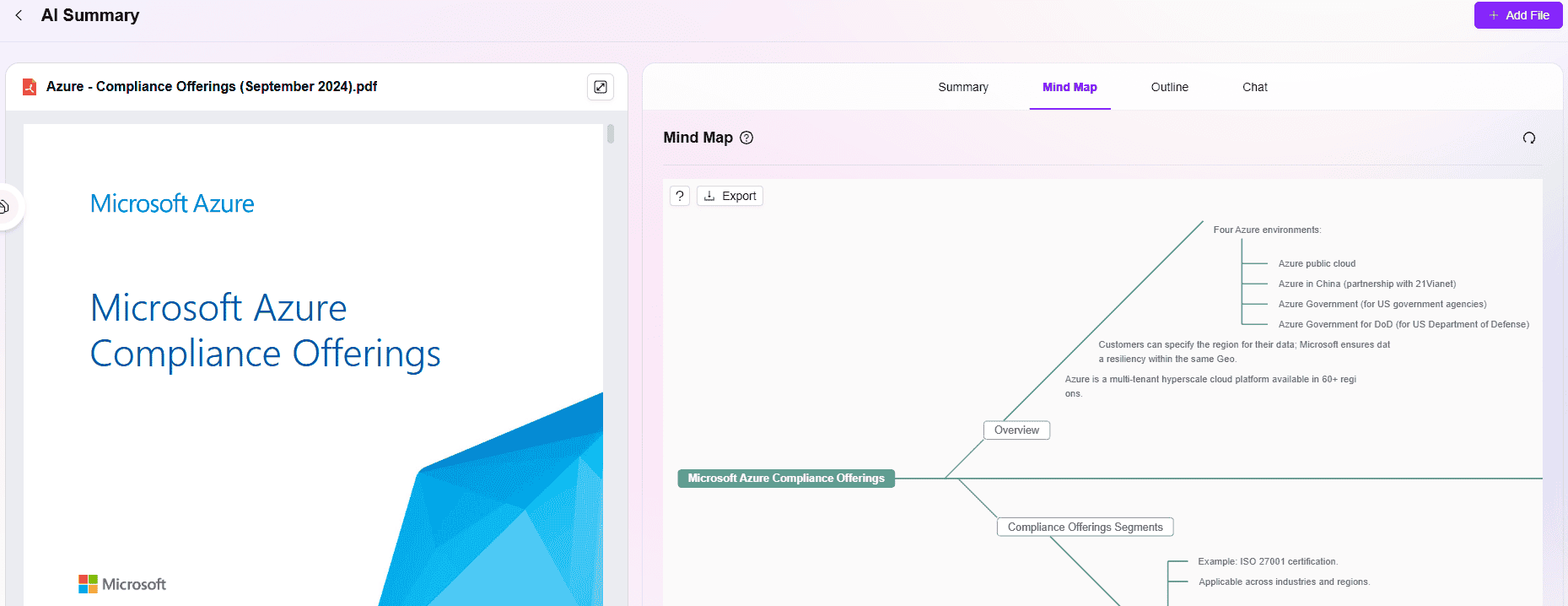
- AI Custom: Supports users to input personalized instructions, flexibly customizing mind map forms and content. Whether special structures, thematic focus, or display styles, just input the requirements, and the system will generate a dedicated mind map adapted to specific scenarios based on the instructions, meeting differentiated creative needs.
Outline
There are five types of outlines: Default, Structural Outline, Solution Outline, Timeline Outline, Prompt Optimization
-
Default Outline: Presents content with a concise and general framework, extracting key points around the core theme, using a basic hierarchical structure to organize information. Suitable for daily text summarization, quick idea organization, etc. It is the basic mode of outline generation, meeting generalized content summary needs.
-
Structural Outline: Focuses on the logical architecture and hierarchical relationships of content by breaking down branches and subcategories under the theme, clearly showing the composition structure. Commonly used for sorting knowledge systems, business architectures, complex plans, etc., helping users grasp content frameworks from macro to micro.
-
Solution Outline: Guided by "problem solving," organizing content according to the logical chain "problem identification — cause analysis — solution — execution steps." Suitable for reviewing project flaws, formulating rectification plans, sorting fault handling processes, etc., emphasizing a complete logical loop from problem discovery to resolution.
-
Timeline Outline: Uses chronological order as the clue, organizing content by "start — development — advancement — end" or by phases. Suitable for sorting project progress, event processes, event development history, etc. It connects key matters through time nodes, intuitively presenting dynamic processes and temporal logic.
-
AI Custom: Supports users to input personalized instructions, such as specifying outline themes, structural requirements, content focus, etc. The system flexibly generates a dedicated outline based on instructions, adapting to diverse and customized creative scenarios.
Dialogue
The AI summary dialogue can use File Copilot for single-document Q&A.

AI Summary Related Guidance
-
Preview document page turning: You can turn pages of the previewed document at the bottom left of the preview page.
-
Zoom in/out preview document content: Zoom in or out of the preview file content.
-
Download preview document: Supports downloading the previewed document locally.

- Mind map export: Mind maps generated by AI summary support export.
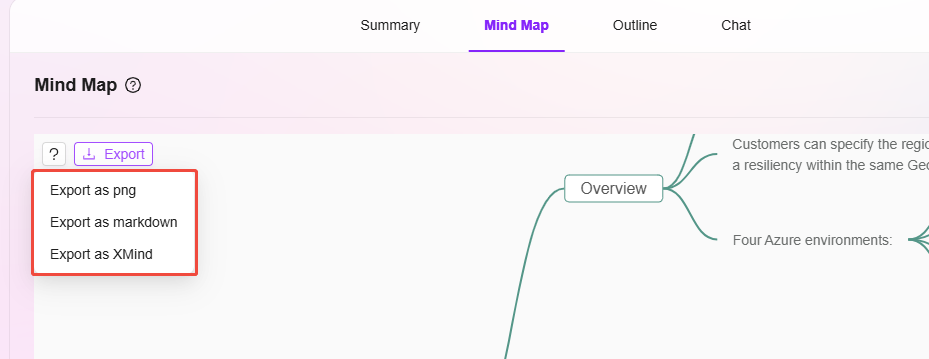
- Edit mind map: Mind maps generated by AI summary support editing.
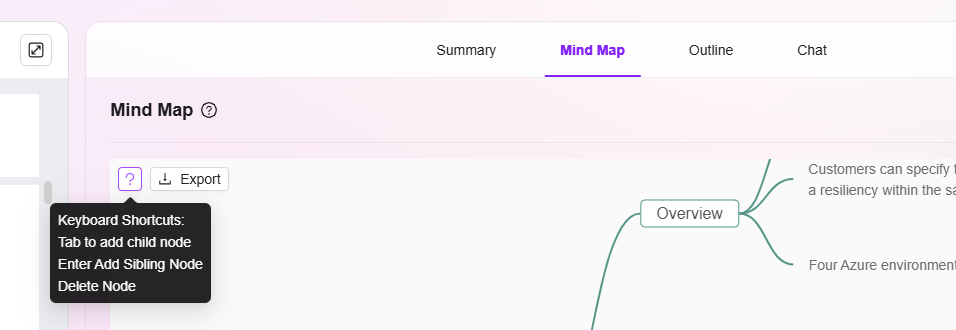
- Add files: Supports adding new files locally for AI summary.
